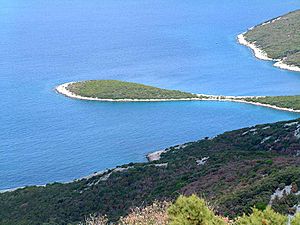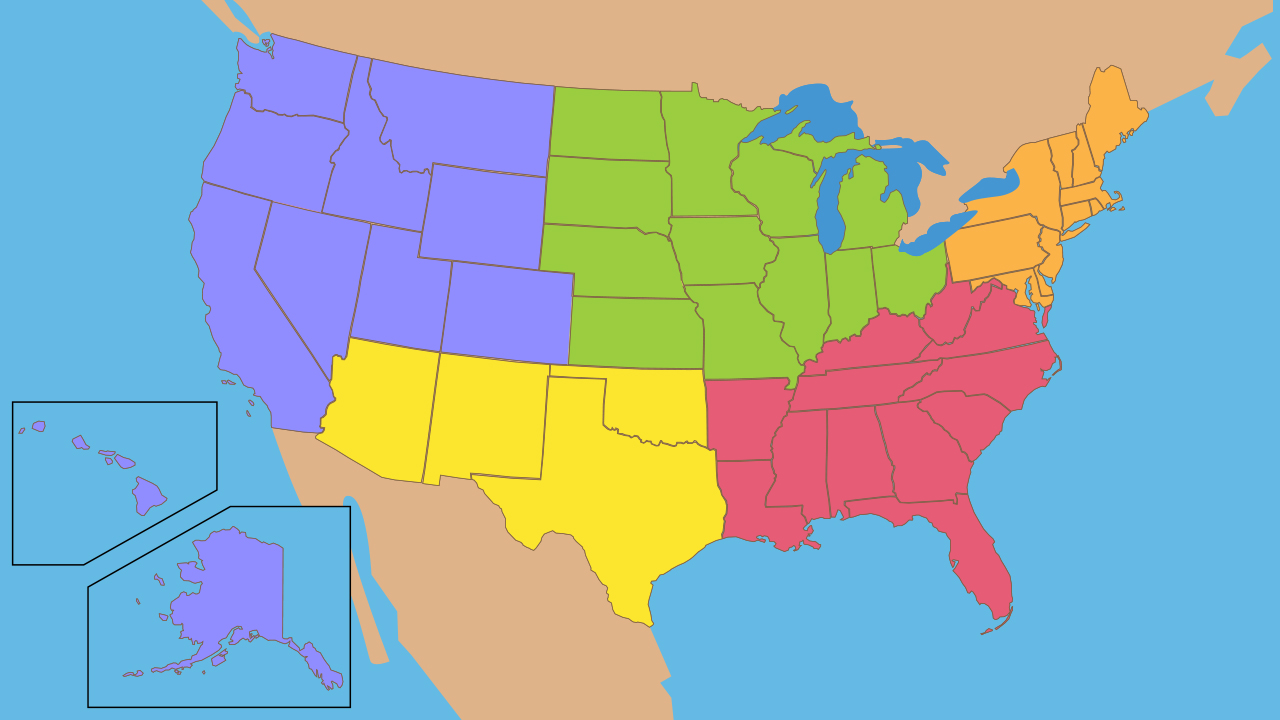What vocabulary word tells you about the daily conditions outside?
Weather
Name this type of landform.
Peninsula
Climates depend on the it's location to the earth. Why might Africa have a warmer climate than Canada?
Africa is closer to the equator than Canada.
Canada is farther from the equator.
Oil, coal, iron, gold, and timber are known as ______ _____.
Natural resources
Most communities develop in regions where there is plenty of land and fresh water.
True.
What vocabulary word tells us about the kind of plant life that grows in an area?
Vegetation
Name the 7 continents.
Asia, Africa, North America, South America, Antarctica, Europe, Australia
Plants that can handle small amounts of water, cacti, dry climates, desert tortoises, grasses and shrubs.
Give an example how timber can be used to make a product.
Give an example of how cotton can be used to make a product.
Fabric
How might people adapt in an artic climate?
Wear warmer clothes, dress in layers
Sled or ski to travel.
Driving snowmobiles.
What kind of natural resources might you find in an agricultural region? (Name 2)
corn, soybeans, hay, wheat, cotton - top 5 in US
(any vegetables/fruits/grasses)
Name the 5 Oceans
Pacific Ocean, Atlantic Ocean, Southern Ocean, Indian Ocean, Arctic Ocean
Give me 3 examples of what we might find in a grassland vegetation.
Rain, tall grasses, berry bushes, small trees, short grasses, prairie dogs.
Give an example of how oil can be used to make a product.
Give an example on how iron can be used to make a product.
Oil - heated to make plastic
Iron - makes steel, steel is used in making automobiles and building materials
When people build houses, roads, railroads, and bridges, are they adapting or modifying?
modifying (changing the land to fit their needs)
What's the difference between a renewable and nonrenewable resource?
Renewable - it can be replaced in a short amount of time
Nonrenewable - it cannot be replaced or takes a long time to replace
What are the 5 Regions of the United States?
Midwest, West, Northeast, Southeast, Southwest
Give me 3 examples of what we might find in a tundra vegetation.
A _____ ______ is a place where many kinds of factories are located.
Industrial region
Give me 2 examples of how large populations affect a city.
More buildings built - skyscrapers, building upward
More transportation.
Roads become wider, railroads are added
What's the difference between adapting and modifying?
Give me an example for each.
Adapt - to change the way YOU do something
Modify - to change something, like the physical environment.
Any example that fits the definition.
 Which region of the US has some of the largest cities in the United States?
Which region of the US has some of the largest cities in the United States?
Which region of the US has buildings made out of adobe (sun-dried bricks)?
Which region has the Rocky Mountains?
Northeast
Southwest
West
Give me an example of how animals and plants interact with each other in a forest or rainforest ecosystem.
Squirrels and birds live in trees, eat the fruit and nuts that grow on the trees, and they help by spreading the seeds
Give me an example for each.
Conserve - save and protect natural resources
Recycle - to use an item again.
Any 2 examples that make sense will work.
How do farmers, miners, and community leaders improve the land they work with?
(Give an example for each)
Miners - carve out soil to search for minerals, plant trees and other vegetation
Community leaders- create and pass laws (throwing garbage, clean drinking water, oceans)